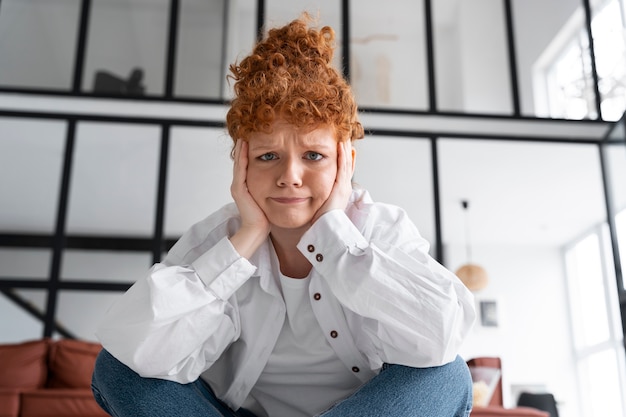
Mental health issues like depression and anxiety can be incredibly tough to deal with, affecting how we go about our daily lives. If you’re facing these challenges, you’re not alone. Anxiety disorders are the most common mental health concern in the United States, impacting 40 million adults each year. Depression isn’t far behind, affecting 16 million adults annually.
Let’s dive into what you can do to seek treatment for mental health concerns. Major depression and anxiety disorders can both significantly impact your life. Depression typically involves feelings of ongoing sadness, emptiness, or worthlessness, which can lead to sleep issues, changes in appetite, low energy levels, and difficulty concentrating. Anxiety disorders, meanwhile, are marked by excessive worry and fear that interrupt everyday activities.
It’s crucial to consult a doctor or mental health expert if you suspect you have depression or an anxiety disorder. Getting a proper diagnosis and treatment is essential because these conditions can seriously affect your life. Some intense symptoms of anxiety and depression include constant nervousness or worry, restless or intrusive thoughts, physical symptoms like chest pain or a racing heart, avoidance of social settings, and difficulty completing daily tasks. Mood swings and changes in sleep and eating habits are also common.
If you’re experiencing symptoms of anxiety, it’s important to reach out to a mental health professional for help. Anxiety can contribute to various physical and mental health challenges. Both anxiety and depression are recognized as mental illnesses and can be treated with therapy and medication. According to the National Institute of Mental Health, these conditions affect more than 18% of adults each year in the U.S.
Although they’re often seen as separate issues, anxiety and depression have many similarities, such as causing feelings of sadness, worry, and isolation. They can also make it tough to concentrate, sleep, or eat. However, the two conditions have distinct characteristics: anxiety usually features excessive worry and fear, whereas depression is more about a persistent low mood and loss of interest in activities.
Despite how overwhelming these conditions can feel, effective treatments are available. With proper diagnosis and the right treatment from mental health services, people can live happy and fulfilling lives despite having anxiety or depression.
Major depressive disorder (MDD) and anxiety disorders, although they share some symptoms, are different conditions requiring different treatments. MDD involves a consistently sad or empty mood, loss of interest in previously enjoyed activities, fatigue, difficulty concentrating, sleep disorders, and feelings of worthlessness or guilt. Anxiety disorders, by contrast, are characterized by excessive fear or worry interrupting daily life. Although those with MDD might experience anxiety, it isn’t the main symptom.
Treatments for depression typically involve antidepressant medications and talk therapy, whereas anxiety disorders may require medications, therapy, and lifestyle changes. There are generally five categories of treatment for reducing anxiety and depression: medication, therapy, self-care, light therapy, and electrical stimulation.
Medication, like antidepressants, is often used to relieve low mood symptoms, though it’s not a cure and can have side effects. Therapy, involving conversations with a mental health professional, helps explore thoughts and feelings and offers coping strategies for mental health challenges. Self-care, including exercise, relaxation techniques, and adequate sleep, can help manage symptoms and enhance well-being, though it’s not a cure.
Light therapy, involving daily exposure to bright light, treats seasonal affective disorder and can support other types of depression. Electrical stimulation, using electrical currents to target specific brain areas, is usually reserved for severe depression cases not responsive to other treatments.
Though the exact causes of anxiety and depression aren’t fully understood, several factors are linked to these conditions. Genetics may play a part; if a family member has anxiety or depression, you’re more likely to experience these issues. Stressful events, like losing a job or mourning a loved one, can also trigger these conditions. Imbalances in brain chemistry, such as low serotonin levels, are associated with anxiety and depression.
Understanding these risk factors is crucial in preventing and treating anxiety and depression. Different treatments work for different people. For example, antidepressant medications can reduce depression symptoms, but they may take weeks or months to show effects. Talk therapy often works faster by equipping people with tools to manage their depression. Exercise is another effective treatment, helping boost mood-enhancing chemicals in the brain. If you’re looking for a quick way to manage depression, talk therapy or exercise might be the best options.
Depression and anxiety can make everyday tasks feel impossible. If you’re struggling with these issues, remember you’re not alone. Millions worldwide face depression and anxiety every day. Thankfully, many treatment options are available to help manage symptoms and improve your quality of life. If you think you could be dealing with depression or anxiety, please seek professional help. With the right treatment, you can start feeling like yourself again and move past these challenges.












































